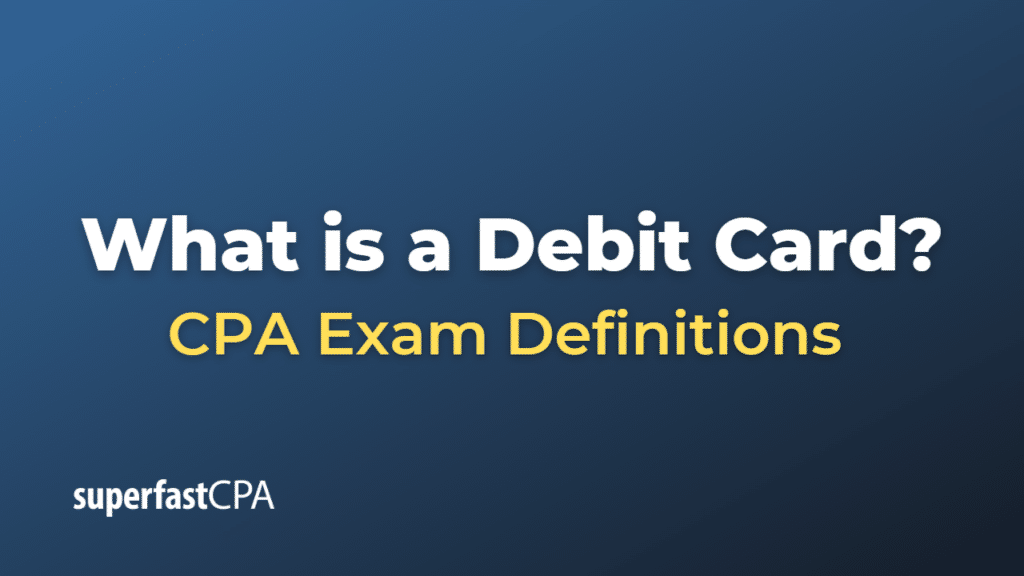Debit Card
A debit card is a type of payment card that deducts money directly from a cardholder’s checking account to pay for a purchase. Debit cards eliminate the need to carry cash or physical checks to make purchases.
Here’s how it works:
When you use a debit card, the amount you spent is immediately deducted from your linked bank account. For example, if you have $1,000 in your bank account and you use your debit card to buy a $100 item, $100 will be deducted from your bank account, leaving you with a balance of $900.
Unlike credit cards, debit cards allow bank customers to spend money by drawing on funds they have already deposited at the bank. Credit cards, on the other hand, allow consumers to borrow money from the card issuer up to a certain limit in order to purchase items or withdraw cash.
Debit cards also usually allow for instant withdrawal of cash, acting as an ATM (automated teller machine) card. This is handy when cash is needed, and no ATM associated with your bank is nearby.
Debit cards can also be used for online shopping, bill payments, and virtually any other transaction you can make online.
It’s important to keep track of your checking account balance to avoid overdraft fees if you spend more than what’s in your account. Some banks offer overdraft protection, which covers the cost of purchases when your account balance goes below zero, but these services often come with fees.
As of my knowledge cutoff in September 2021, many debit cards come with security features and protections, such as zero liability for fraudulent charges, although these can vary from bank to bank and country to country. Always check with your bank to understand the specific features and protections offered with your debit card.
Example of a Debit Card
here is an example to illustrate how a debit card works:
Let’s say John has a checking account at his local bank, and the balance in his account is $2,000. The bank provides John with a debit card linked to his checking account.
- Purchasing Groceries: John goes to a supermarket to buy groceries. His total comes to $150. John uses his debit card at the checkout counter. The supermarket’s card machine connects to John’s bank, checks if he has enough balance, and upon confirmation, approves the transaction. The $150 is instantly deducted from his checking account, leaving a balance of $1,850.
- Dining Out: Later in the week, John dines at a restaurant and the bill comes to $50. He uses his debit card to pay. The restaurant’s card machine does the same check, and upon finding enough balance, approves the transaction. The $50 is instantly deducted from his checking account, leaving a balance of $1,800.
- Online Purchase: John decides to purchase a book online for $30. He enters his debit card details on the website to complete the purchase. The website contacts John’s bank, verifies the available balance, and approves the transaction. The $30 is instantly deducted from his checking account, leaving a balance of $1,770.
In all these transactions, John used his debit card to directly draw funds from his checking account. He didn’t need to carry cash or write checks for these purchases. However, he needs to ensure that his checking account has enough funds to cover his purchases to avoid potential overdraft fees.













